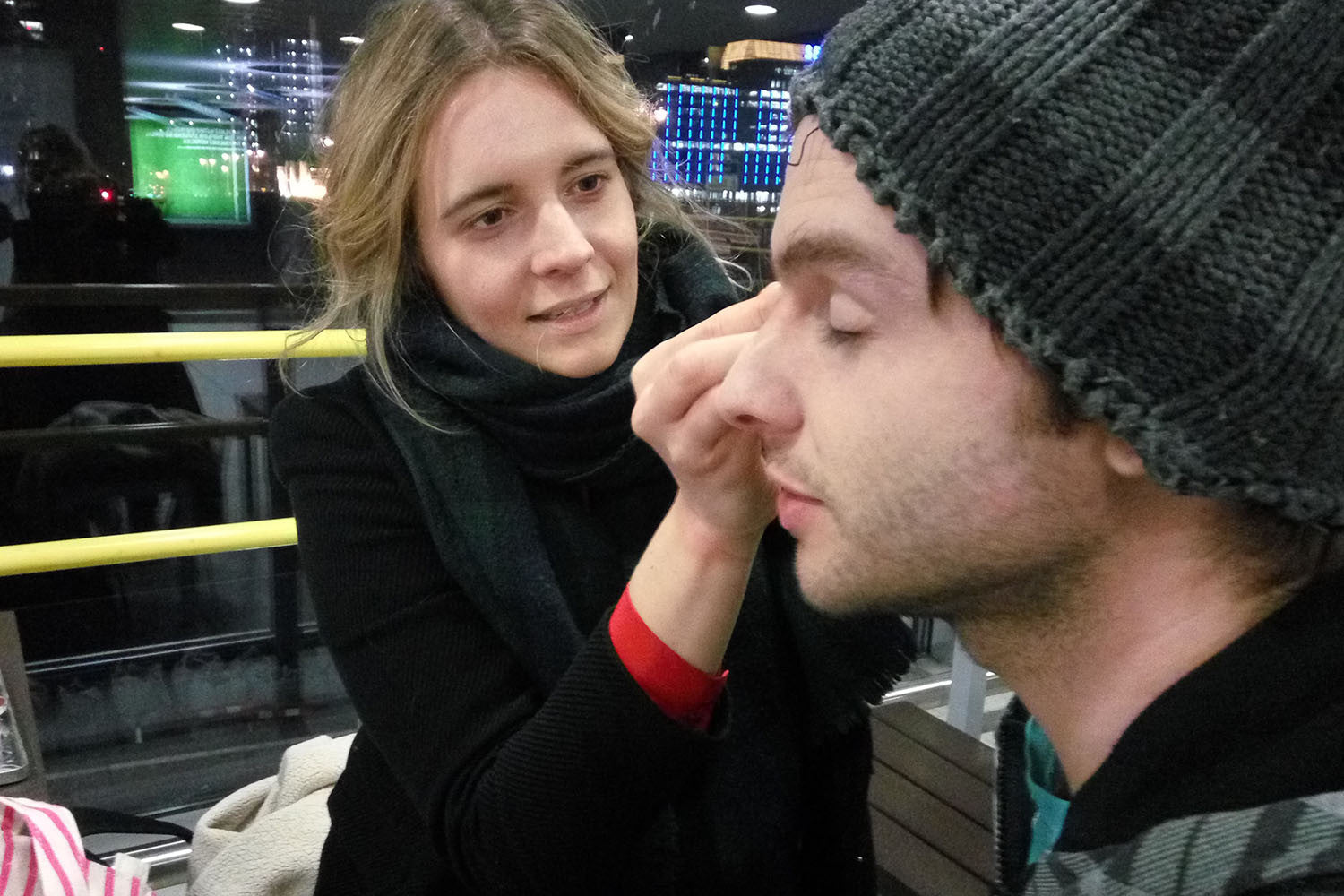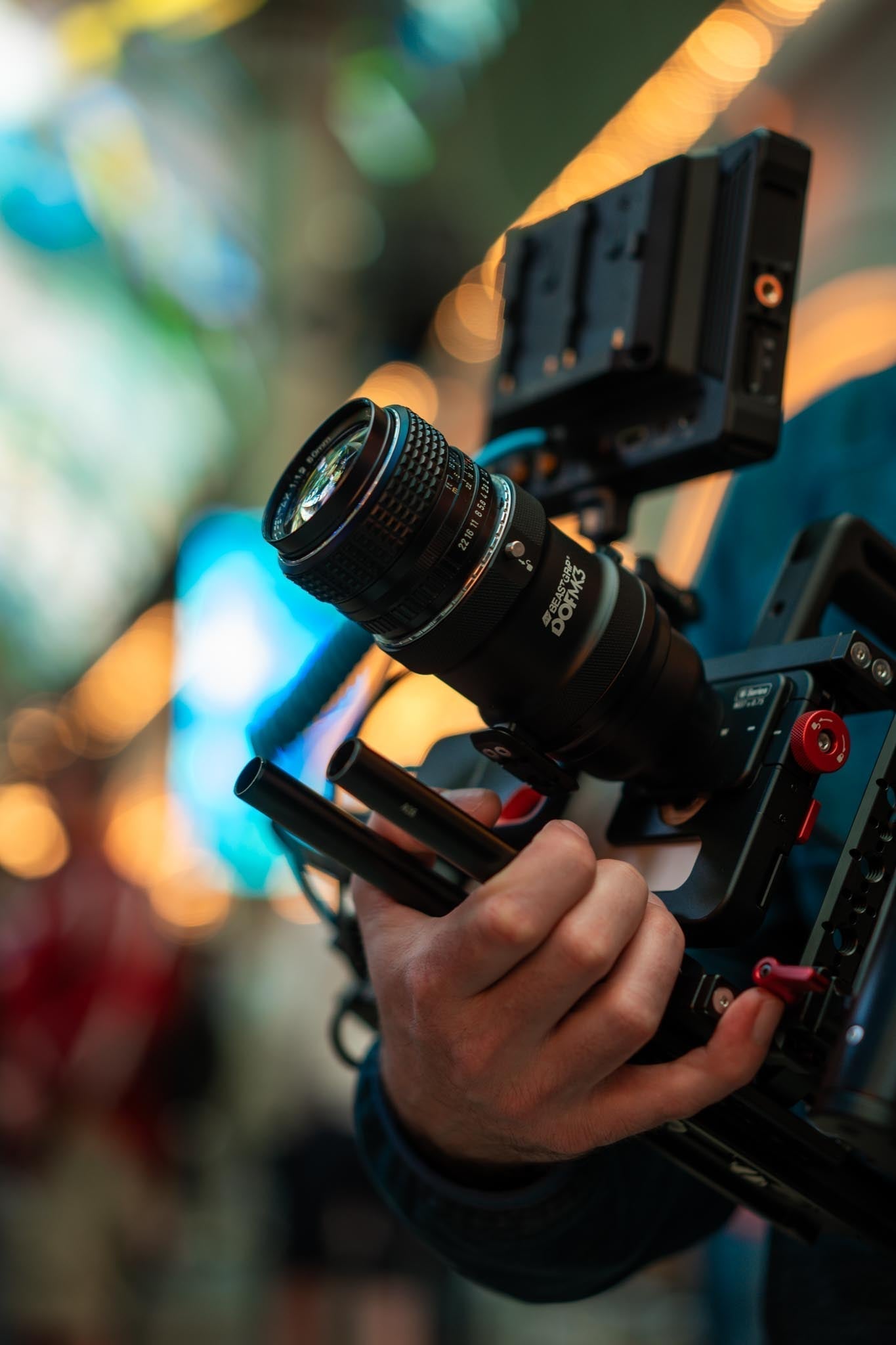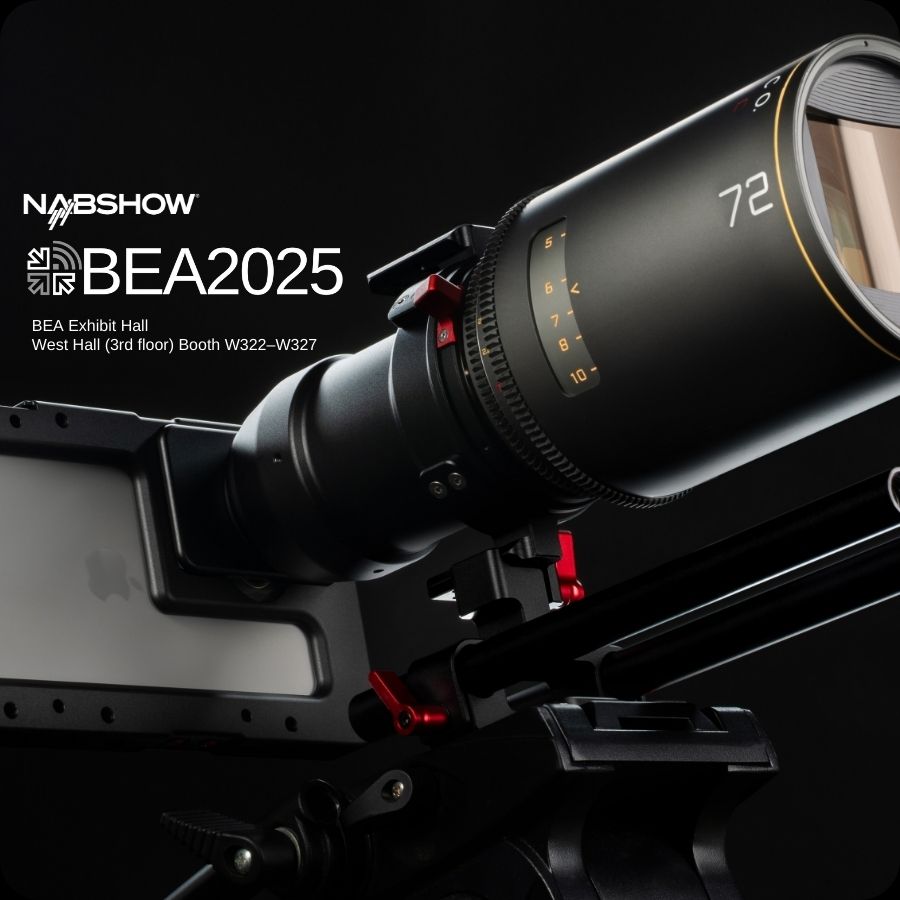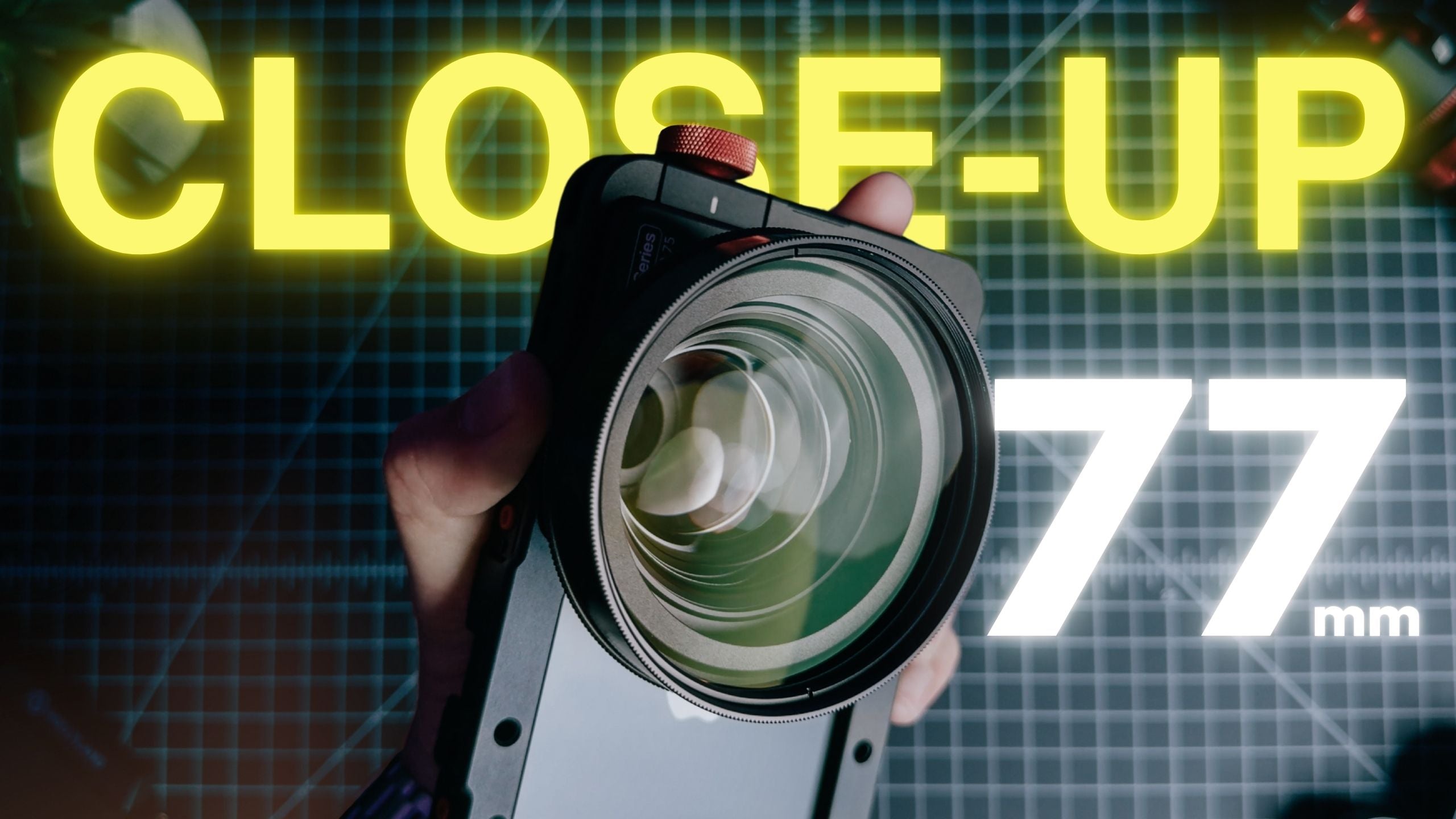"As an actor, I felt much more relaxed and prepared to take risks than I ever have before." - Claire Gordon-Webster
----
After winning the coveted Female Filmmaker category of the FiLMiC Pro Tangerine Dreams Short Film Contest, we took a moment to reach out to Chris Bone and Claire Gordon-Webster to find out more about how they did it. What we found was nothing short of extraordinary, as they offer their insight on gear, overcoming production challenges, and their solution to the overcrowded UK film scene.
BG: What inspired the story behind your latest award-winning short film, "Girl. London. Night.?"
Claire: I wrote the first draft of Girl. London. Night. about four years ago. I had recently moved to London and was feeling very small and lonely in the big city. It’s a mixture of how I was feeling at the time, things that I saw while walking around London and other influences, like my silly urge as an actor to play a vampire.
I wrote the script, filed it away and forgot all about it! [laughs] Speed up to a few months ago, and Chris, Elroy (our co-producer) and I were at a Reframed meeting, brainstorming what we could shoot to enter into the FiLMiC Pro Short Film competition and I suddenly remembered Girl. London. Night. I dug it out of the dark depths of my laptop and pitched it to them. The story quickly grew and changed thanks to the constraints of time, location and competition guidelines.
BG: What gear was used to shoot and edit the film?
Chris: We took a lot of inspiration from the film Tangerine, which was shot entirely on an iPhone 5S. I went to see that at the cinema and was completely amazed at the quality of the end product. So we researched what equipment they used and used that as a backbone.
We ended up shooting on an iPhone 6S with the Beastgrip Pro Rig, Moondog Labs 1.33X Anamorphic Adapter Lens (37mm thread) with their 37mm Anamorphic lens mounting plate for BeastGrip Pro, Rode VideoMicro Compact microphone with the SC7 iPhone cable and Eimo Carbon Fiber Stabilizer Handheld. The film was then edited using Adobe Premiere software.
It’s also really fun to make a film entirely shot on a phone and then screen it to people without telling them, only to then reveal how it was shot and get a “Wow” reaction! - Chris
BG: How did the gear help you tell the story?
Chris: Using a setup with such a small footprint gave us a lot more flexibility to shoot in crowded places, whilst still maintaining a high level aesthetic. We could weave through London Overground stations and quickly set up in the backstreets of The City of London.
The sensor on an iPhone struggles in low light, but this meant we tried to seek out diegetic lighting that looked realistic but at the same time gave enough light to avoid having too much grain in the final picture.
BG: What was one of the most challenging parts of shooting this film, and how did you overcome/pivot past it?
Claire: From the producing side, you’re constantly walking a tightrope trying to make sure all the moving parts of the shoot fall into place with one another: that the crew and cast (who all fit the shoot in around other commitments) are available on the shoot dates, that all the equipment works in sync, and so on.
Casting proved to be a little tricky, especially with finding the “loved-up” couple on the train platform. Our director was adamant that he wanted an actual couple who were willing to make out passionately. Finding a couple that were both performers and available on the shoot date was a challenge. In the end, my friend Chiraz saved us and convinced her boyfriend, Jay to help us out. (Romance is not dead!) [laughs]
Then we had to choreograph them making out while I was watching so that when we shot everything, we could do it in as few takes as possible so we didn’t draw any attention to ourselves. It wasn’t as “passionate” as our director had hoped but we got the shots that we wanted and the location looked great on screen.

BG: How was shooting on a phone compared to other cameras you've used?
Chris: We’ve shot on Canon 5D’s and the Black Magic Pocket Cinema cameras before, but using an iPhone meant we could get be close to the quality of those cameras at a fraction of the budget. We had to be careful to keep an eye on the memory left on the iPhone and move data onto a hard drive regularly as there is a limited amount of built in space on the iPhone (although we have since purchased some external USB drives you can plug into the Lightning port).
We did get some frame dropping, particularly with the panning sunrise shot on London Bridge. We’re not sure if this occurred whilst shooting or whether something happened during post-production and unfortunately, at the time of filming we didn’t have the Beastgrip DOF Adapter, so we were limited to only shooting with or without the Moondog Labs 1.33X Anamorphic Adapter Lens. This obviously meant far less lens flexibility than, say, if we had partly shot with a 5D. However, we were eager to shoot the entire film only using the iPhone, and have subsequently purchased Beastgrip’s DOF Adapter for future projects.
BG: Do you plan to ever shoot on a phone again, why?
Chris: Without a doubt. The fact that most of us have them in our pockets means we are able to shoot without renting very much additional equipment. And, as some of the other winners of the FiLMiC Pro competition categories have shown, there is a tremendous amount of potential to get really high quality output content on your phone. It’s also really fun to make a film entirely shot on a phone and then screen it to people without telling them, only to then reveal how it was shot and get a “Wow” reaction [laughs]!
Claire: I agree with Chris - people are amazed at the quality you can get shooting on an iPhone. I feel that shooting film on a smartphone is somewhat of a “revolution” in filmmaking. Now filmmakers can make beautiful films without the constraints of budgeting for expensive kit.
"Also, much of what we were filming was shot “guerilla” style, which meant we had a “now or never” attitude." - Claire
BG: How did you persuade the convenience store owner and hospital to let you shoot there?
Claire: I love that you think it was shot in an actual hospital room. It’s actually my bedroom, dressed up with lights and art direction [laughs]! Movie magic! With the convenience store scene, we had planned to just shoot the scene from outside the shop – where I would walk in and out, while the camera stays outside.
On the day of the shoot, our director was really keen to shoot inside the shop, to continue building the momentum of the sequence. Right before we shot the scene, I went into the shop (in full vampire get-up) and asked (as sweetly as a vampire could) if we could shoot inside the shop with the promise that we’d all buy lots of stuff from the shopkeeper afterwards. The shopkeeper was remarkably chilled about it. He let us do as many takes as we needed. What a dude [laughs]!
BG: Claire, how was acting in this film different than in your previous work?
Claire: That’s a really good question because I feel that shooting on an iPhone really changed the atmosphere and dynamic on set for me. I’m used to shooting with a big, bulky camera that has quite a presence. With the Girl. London. Night shoot, the iPhone was so inconspicuous that often I forgot it was there. This took some of the pressure and performance nerves off. As an actor, I felt much more relaxed and prepared to take risks than I ever have before.
Also, much of what we were filming was shot “guerilla” style, such as the train and train station shots - which meant we had a “now or never” attitude. We had to go in, shoot and move on. This meant there was no time for me to obsess over my performance. I had no time to doubt myself or make safe/easy choices in my performance, knowing that I had many takes to perfect it. I had to make a bold choice and move on, which was surprisingly very liberating.
The team on the set of the hospital scene
BG: Now that you've won the competition, what's next on your to do list?
Chris: We’re both part of a film collective in London called Reframed, which I set up with an actor and producer friend of mine called Eric Geynes. We were frustrated at the lack of opportunities for actors in the very crowded UK scene so we decided to set up a like-minded network of actors and filmmakers to take back a bit of control and create opportunities for ourselves. It also gives us the creative freedom to make projects that we are really passionate about. We plan to continue to make short films with a goal to launch a YouTube channel later in the year, before moving onto medium-length films and eventually producing a feature.
Everybody in the collective works for free at present, but we also strongly believe that everybody involved should feel like they are getting something out of the projects creatively rather than doing someone else a favor. So far this dynamic has worked, but as we go forward, we are hoping to get to a place where everyone on set is paid and we can still continue to get a sense of real creative achievement at the same time.
We’ve already shot our next short film called Meat, which Claire wrote and acted in, along with myself and Elroy Anthony (who is also a co-producer of and actor in Girl. London. Night.) We shot on a 5D Mark II because we didn’t have access to the Beastgrip DOF Adapter in enough time for the shoot and the director and DoP had a very specific shot plan and wanted some focus pulls and different depth of field which we couldn’t achieve with our current setup. We plan to have Meat edited by the end of the summer! BG
-----
Follow and tag us on Instagram (@beastgrip_pro), Facebook, Twitter, Periscope and join our newsletter for more phoneography news, tips and tricks and join the #BeastgripNation!







Share:
Beastgrip Expands to Pakistan!
iPad Commercial Shot on Beastgrip Pro + DOF Adapter (Pt. 2)